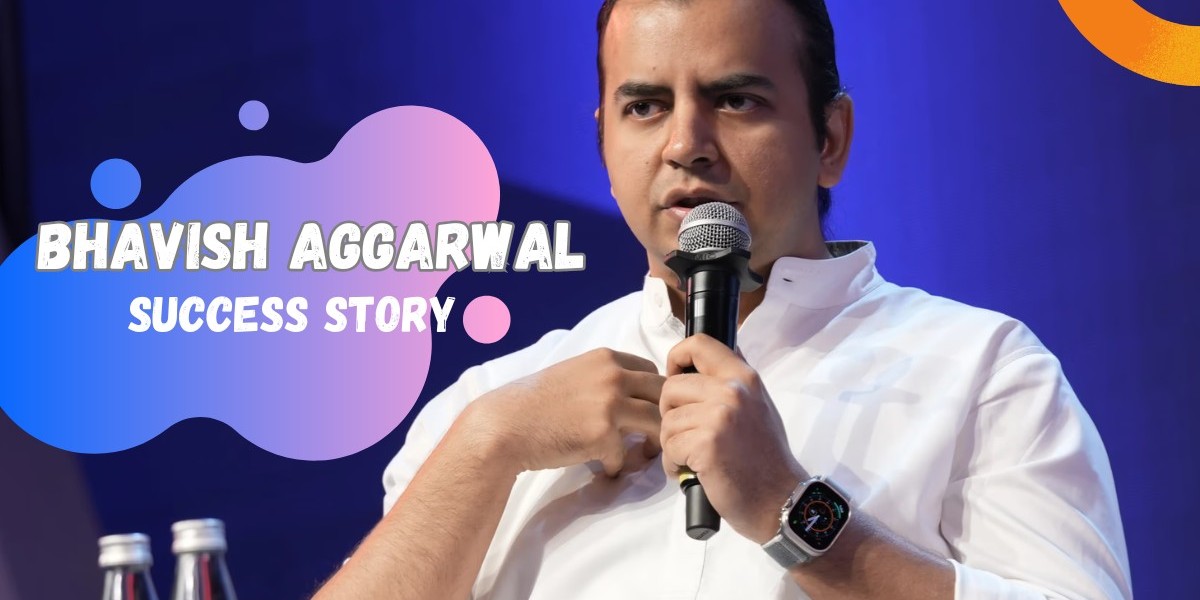In recent years, the name Bhavish Aggarwal has become synonymous with India’s startup ecosystem, particularly in the transportation industry. His journey from a tech enthusiast to the founder of one of India’s largest ride-hailing companies, Ola, is nothing short of inspiring.
Bhavish Aggarwal’s success story reflects ambition, resilience, and the power of a groundbreaking idea. This article will delve into how he transformed Ola into a household name, highlighting the challenges he overcame and the milestones he achieved.
Early Life and Education
Bhavish Aggarwal was born on August 28, 1985, in Ludhiana, Punjab. Raised in a middle-class family with a strong focus on education, he showed an early interest in technology and entrepreneurship. After completing his schooling in Ludhiana, he pursued a degree in computer science at the prestigious Indian Institute of Technology (IIT) Bombay, one of India’s leading technical institutions.
Graduating in 2008, Bhavish initially followed a conventional career path. He joined Microsoft Research as a researcher, working on innovative projects and earning patents. However, he soon realized that he wanted more than a stable job; he was eager to build something of his own.
The Inspiration Behind Ola
Bhavish’s journey to founding Ola started with a frustrating travel experience. In 2010, while on a road trip, he faced issues with a car rental service that left him stranded midway through his journey. This personal experience made him aware of the lack of reliable transportation services in India. He identified a gap in the market: a user-friendly platform where customers could easily book rides.
This led to the idea of Ola, an online platform that would allow people to book cabs conveniently. Bhavish Aggarwal’s success story began when he left his secure job at Microsoft and, along with his co-founder Ankit Bhati, launched Ola Cabs in December 2010.
The Initial Challenges and Breakthroughs
Starting a business is never easy, and Bhavish faced several obstacles in the early days of Ola. First, India’s taxi and auto-rickshaw sector was highly unorganized, with most drivers reluctant to adopt technology. Convincing them to use Ola’s platform was a major challenge.
Additionally, Ola was not Bhavish’s first business venture. He had previously launched a travel blog that focused on helping people find detailed travel information, but it didn’t achieve much success. However, Bhavish learned from this experience and applied those lessons to Ola.
Another major hurdle was funding. Bhavish and Ankit initially used their own savings to sustain Ola. It wasn’t until 2011 that they managed to secure external funding from angel investors, which helped them stabilize and expand their operations. Despite these challenges, Bhavish Aggarwal’s success story continued to grow, driven by his vision and determination.
Ola’s Rise to Fame
The real breakthrough for Ola came when Bhavish recognized the importance of smartphone penetration in India. In 2012, Ola launched its mobile app, which allowed users to book rides directly from their smartphones. The timing was perfect, as mobile internet was becoming more affordable and accessible.
This move transformed Ola into a tech-driven company and allowed it to expand rapidly across India. Ola’s business model included offering a variety of ride options, from budget-friendly auto-rickshaws and bike taxis to premium sedans. This approach catered to a wide demographic, which contributed to its rapid adoption across Indian cities.
Key Milestones in Bhavish Aggarwal’s Success Story
Securing Major Investments
Over the years, Ola has received significant investment from top venture capital firms. In 2014, Ola raised $210 million from SoftBank, a Japanese multinational known for investing in tech startups. This funding allowed Ola to scale operations and compete against its biggest rival, Uber, which had entered the Indian market.
Expanding into New Services
Bhavish’s vision extended beyond just cab services. In 2017, Ola launched Ola Bike, a bike taxi service aimed at providing affordable transportation in smaller cities. Ola has since diversified into food delivery, electric scooters, and financial services, creating an entire ecosystem under the Ola brand.
Ola Electric
Bhavish Aggarwal’s success story also includes his contribution to the electric vehicle (EV) sector in India. With a vision for sustainable transportation, Bhavish launched Ola Electric in 2017. The company aims to make EVs affordable and accessible across India. Ola Electric recently launched its first electric scooter, which has received a positive response and marked Ola’s entry into the EV market.
Leadership and Vision
Bhavish Aggarwal is known for his hands-on leadership style and bold vision. He believes in adapting to challenges and is not afraid to take calculated risks. For instance, when Ola faced intense competition from Uber, Bhavish decided to focus on localizing the service by understanding the unique needs of Indian consumers. He introduced features like Ola Share, Ola Play, and a cash-on-delivery payment option, which appealed to the Indian market.
Bhavish is also a strong advocate for sustainable transportation. Ola Electric reflects his commitment to reducing pollution and promoting eco-friendly alternatives. His vision goes beyond profits, focusing on making a positive impact on society.
Overcoming Competition and Regulatory Challenges
Ola’s journey has not been without challenges. Apart from dealing with competition from Uber, Bhavish also faced regulatory issues. The Indian government’s complex regulations in the transportation sector often posed obstacles for ride-hailing services. However, Bhavish managed to navigate these hurdles by working with policymakers and focusing on compliance.
Moreover, Ola’s approach to local needs, such as offering rides in smaller cities and implementing payment options that cater to India’s unique market, gave it an edge over international competitors.
Lessons from Bhavish Aggarwal’s Success Story
The success story of Bhavish Aggarwal is filled with valuable lessons:
Identify Gaps in the Market: Bhavish saw an opportunity in the lack of organized transportation options in India and turned that into a profitable business idea.
Persevere Through Challenges: Despite facing funding issues, regulatory obstacles, and competition, Bhavish remained focused on his vision.
Adapt to the Market: Bhavish’s decision to introduce features suited to Indian consumers, like cash payments and bike taxis, helped Ola stand out in a crowded market.
Invest in Innovation: By launching Ola Electric, Bhavish demonstrated a commitment to innovation and sustainability, which has opened new avenues for Ola.
Conclusion
Bhavish Aggarwal’s success story serves as an inspiration to aspiring entrepreneurs worldwide. From a simple idea inspired by a poor travel experience, he built Ola into one of India’s leading tech companies. His journey reflects resilience, adaptability, and a relentless pursuit of innovation.
Today, Ola is a multi-billion-dollar company, thanks to Bhavish’s leadership and vision. As he continues to expand Ola’s footprint, especially in electric mobility, Bhavish Aggarwal is redefining the future of transportation in India and beyond. His story is a testament to the fact that with a great idea and a determined mindset, anything is possible.
Naijamatta is a social networking site,
download Naijamatta from Google play store or visit www.naijamatta.com to register. You can post, comment, do voice and video call, join and open group, go live etc. Join Naijamatta family, the Green app.
Click To Download


